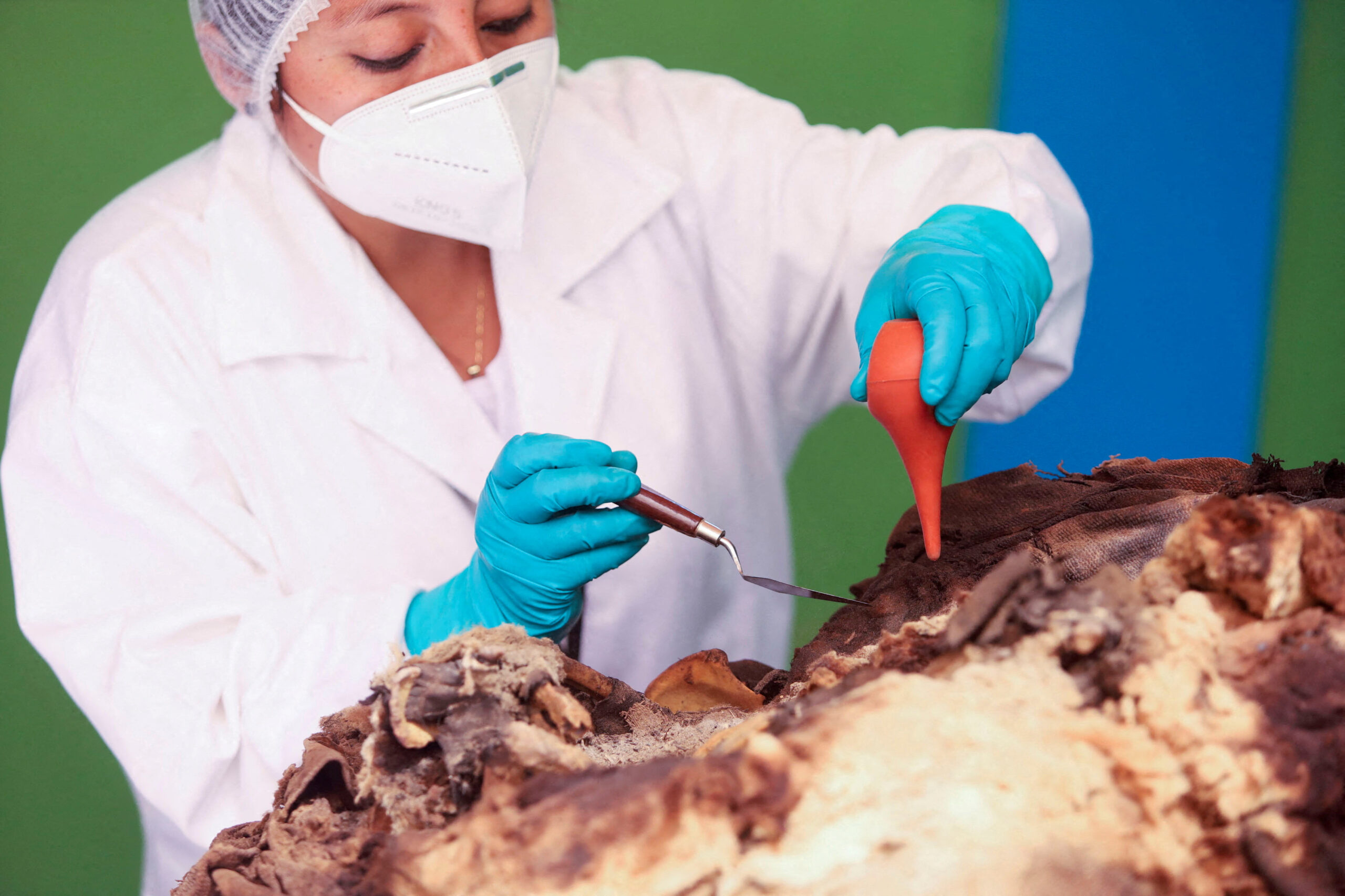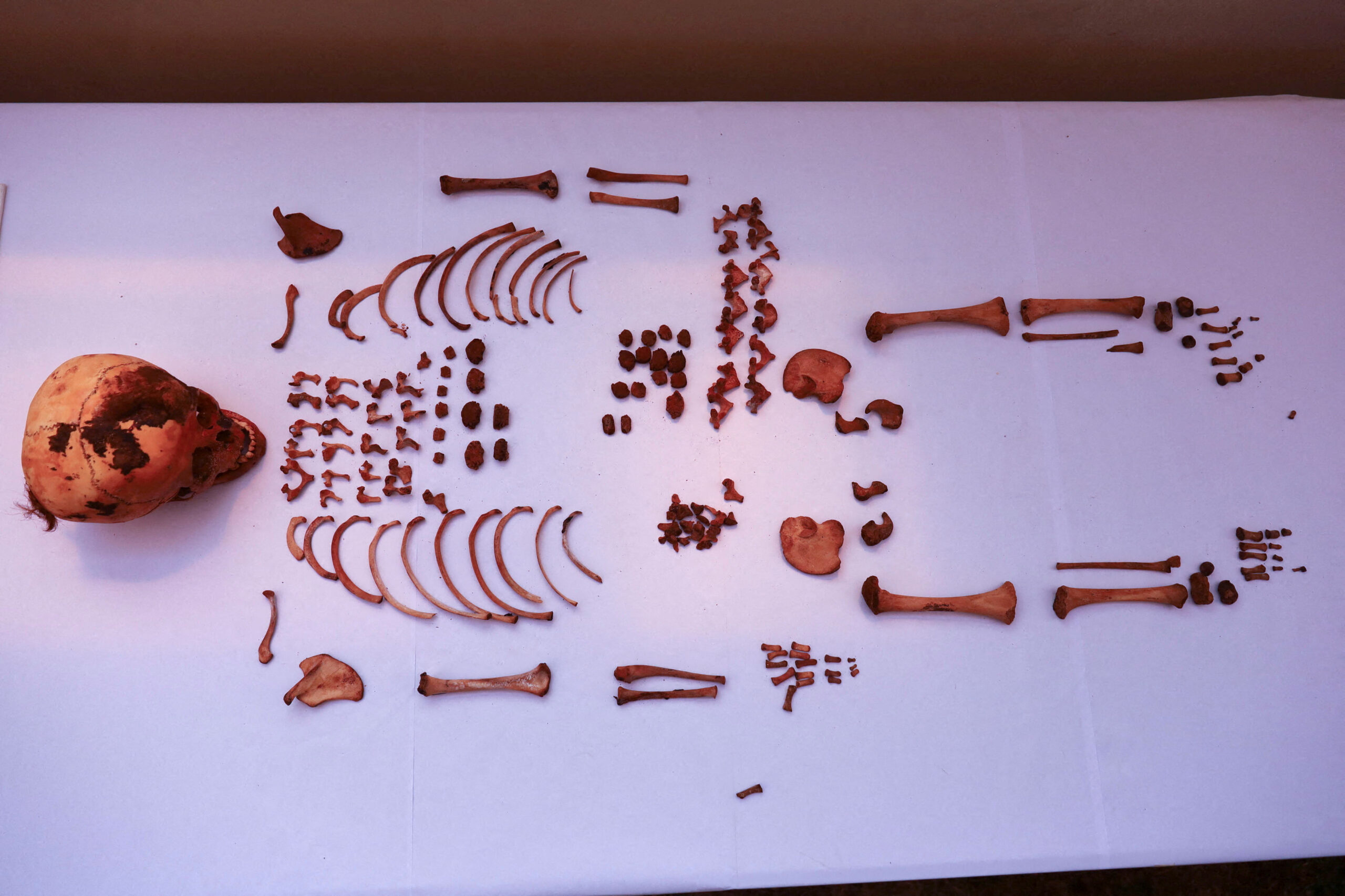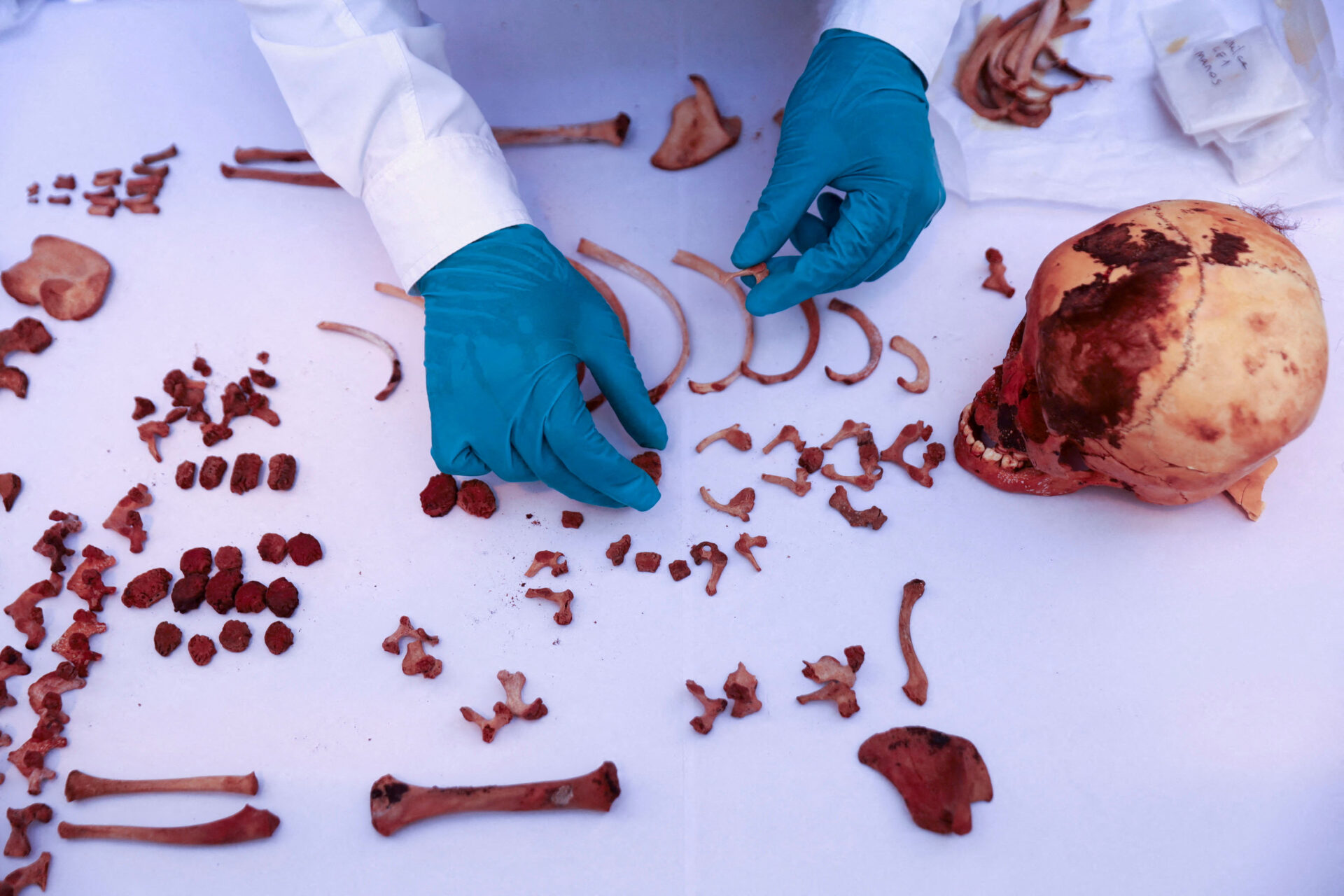LIMA (Reuters) – Peruvian archaeologist Cecilia Camargo isn’t your usual tomb finder hunting for lost ruins: she works for the local gas firm.
While installing gas pipes under roads and buildings, gas distributor Calidda has unearthed some 1,700 archaeological remains, including mummies, textiles and ceramics dating back hundreds or thousands of years.
On Wednesday, the firm unearthed a 600-year-old funeral bundle with the remains of an ancient settler, found during excavations in a neighbourhood of the capital Lima.

Read More: New image reveals violent events near a supermassive black hole
The cloth-covered bundle – which archaeologists separated with fine tweezers – dates back to the pre-Hispanic Chancay culture that developed in Peru’s central coastal region some 800 years ago, said Camargo, who looks after Calidda’s warehouse of cultural remains.
“By building out the gas distribution network, we have excavated almost all the streets of Lima,” she told Reuters. “We are unearthing little by little the thousand-year history of the capital.”
Finding ruins and remains in construction sites is common in Peru, home to dozens of pre-Hispanic cultures along the coast and in the Andes. Metropolitan Lima, with some 10 million inhabitants, has some 400 ‘huacas’ or archaeological ruins.
Read More: Government pumps in E1.09 bn for Natural Resources Ministry
Camargo said that in almost a decade of work, the firm has uncovered multiple ancient burial sites and other archaeological finds, including a rare and little-studied example of a 2,000-year-old ceramic with a style called “white on red.”

“Around 1,700 times our archaeologists have had to stop the work to recover archaeological evidence,” she said. “And we are finding things every day, under the roads, sidewalks and homes.”
The most important archaeological regions in Peru are the Inca ruins of Machu Picchu in the mountain forest near Cusco, and the mysterious Nazca lines, drawn in a coastal desert more than 1,500 years ago, in the Ica region.


